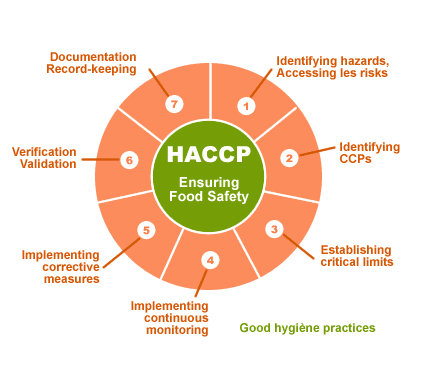More than 1/3 or 34.9% of the American population is considered "obese" (A person is considered obese if they have a BMI of over 30) in 2014 according to the CDC. This is shocking statistic. It tends to be correlated with Americans consuming foods that contain too much sodium and too many calories from solid fats, along with little exercise. The Dietary Guidelines for Americans suggests that Americans need to increase their nutrient consumption and limit their intake on sodium, solid fats, added sugars, and refined grains, and increase their consumption of vegetables, fruits, whole grains, fat-free or low-fat milk, seafood, lean meats, eggs, beans, peas, nuts, and seeds. With efforts like this, as well as banning sodas and junk food from schools and more clarity on food labeling - there has been evidence of obesity stabilization recently in the United States! While the obesity rate is at its highest it has ever been, continual efforts are at least stopping it from reaching a greater percentage of the American population.
In comparison, French people are considered the
"slimmest" Europeans, followed closely by the Swiss and the Italians.
But in France the percent obesity doubled from 5.5% in 1995 to 11% in 2004,
almost ten years later. Why then, while the obesity in France and the United
States has both increased, do French people tend to have less health issues
than Americans? Today France is considered the least obese country in Europe.
Two observations can be made from these facts - Although the French obesity
rate is increasing, it is also increasing in all countries with the increase in
fast food, frozen food, and availability to food. So, while the French rate of
obesity is increasing, France has remained one of the lowest % obesity
countries in Europe for over 20 years.
Another is a question - why has the obesity rate
increased in France at such a fast rate? McDonalds is the most profitable in
France than in any other country in Europe! According to most health
professionals, the blame has been put on fast for, prepared food, sedentary
lifestyle, and the loss of a "common food culture," meaning that the
prevalence of not opening the refrigerator between meals is not as high as it
used to be. The fat content of foods usually seen in the French diet has
increased as well, directly correlating with the obesity increase.
France immediately took action when its obesity
rates began to rise - including banning soda- and snack-selling machines in
2005 from public schools, as well as adding a 1.5% tax on food companies'
budgets who do encourage healthy eating. Like I mentioned before,
Americans have also taken similar measures of action, but the United States
came to these actions much more slowly than France. So why is France still so
healthy and slim, even with an increase in obesity?
The reason why French obesity is so much lower than
American obesity can be due to a number of issues. One - French people value
their cuisine and food so much more than Americans. A meal is more than a quick
snack, or whatever is easier and cheapest to a French eater. In general, French
people tend to value quality over quantity, price, or quickness of preparation
in comparison to American people, who tend to value the later three qualities
over quality. France also has more strict regulations on organic food and the
use of GMOs in agriculture than in the United States, which may increase the
quantity of fresh produce consumed in a French eater's diet in comparison to an
American eater's diet. French people also tend to eat less during their
meals, and eat meals less frequently. A breakfast meal for a person in France
could be considered a small pastry and a coffee. While a coffee, with cream and
sugar, and a pastry, probably containing a lot of sugar - may not be considered
the healthiest breakfast, since it is in a smaller quantity than a large stack
of 10 pancakes (even if they are low fat or using whole grain) an American may
consume for breakfast, in the end the French eater may benefit with a smaller
calorie and more efficient meal.
A very confusing aspect of the French diet is the
"French paradox." This paradox, coined in the 1980s, is the curious observation
that while in general French people have a low occurrence of coronary heart
disease (CHD) while having a diet that consists of very high levels of
saturated fats, which are usually considered a risk factor for CHD. While there
are many possibilities that explain this phenomenon, most tend to fall under
two categories. Either saturated fats are not as linked to CHD as previously
thought, or there are other lifestyle choices French people make that allow
them to live healthier lives.
Therefore, the evidence has given the public mixed results. It is
difficult to distinguish as to why the French are considered so much more
healthier than Americans. While we can offer reasons such as the French having
less food at meals, better quality of foods, and less frequent meals, or
perhaps just living healthier lifestyles, we cannot pinpoint one reason as to
why there is a difference in health between the two countries, and fix that one
issue. Who knows, perhaps all Americans can do to have a more "French"
lifestyle besides taking on the changes that come with the differences between
French and American lifestyle and diet is to … eat a croissant.


















